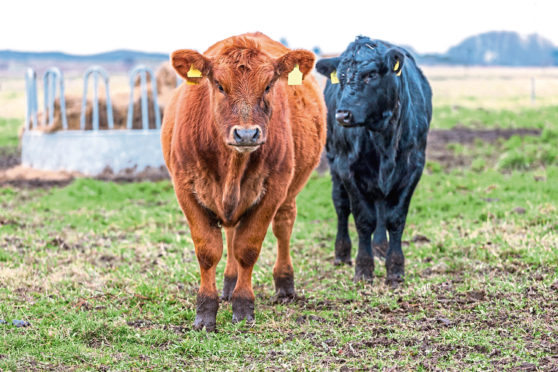Beef producers are being told to prepare for the introduction of mandatory electronic identification (EID) tags for new-born calves from summer 2021.
ScotEID, which manages the database for recording animal movements in Scotland, held two meetings at Thainstone, near Inverurie, to share details of a new recording system for the national herd.
The new system, which is subject to a Scottish Government consultation, will require all cattle to have an EID tag in future.
EID tags are likely to become mandatory for new-born calves first in 2021, and thereafter any breeding stock leaving the farm for slaughter, or sale, are also likely to require an EID tag from 2023.
ScotEID’s Anna Robertson said farmers and crofters will also be required to move away from the British Cattle Movement Service’s (BCMS) Cattle Tracing System (CTS) and start recording all births, deaths and movements via ScotEID from next summer.
“We are not going to need any more animal information,” said Ms Robertson. “The only difference will be that you are logging into ScotEID, rather than CTS, and you will still get paper passports.”
She said paper passports will eventually be discontinued, however this will only happen once a UK-wide framework has been agreed on the issue.
ScotEID director, Bob Yuill, said the proposed system will result in Scottish cattle having tags with ultra-high frequency (UHF) and low frequency (LF) technology, a visual print of the ID number, and an option for barcodes.
He said: “We suspect the tag price won’t be much more than a standard EID tag at the moment which is about £2.30.”
He said the main benefit of moving to a cattle EID system was better traceability and the ability to better deal with any potential disease outbreaks.
Ms Robertson said the new system should also reduce the cost of movement recording and remove the cross compliance burden on farmers, as both cattlekeepers and inspectors will be accessing the same database for cattle information.
She said the new system will feature two types of notification of a movement – intention to move an animal to a mart or abattoir, and pre-notification of a movement to another farm business or holding.
